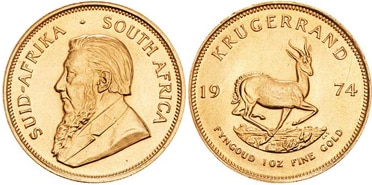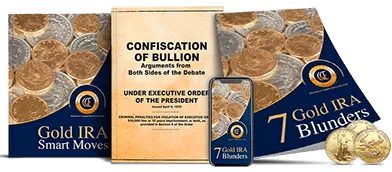Table of Contents
South African Krugerrand Gold Coin

Most investors are familiar with gold coins as investments, but did you know there is a kind of gold coin known as a sovereign gold coin? Offering historical collectability and intrinsic value, these coins have an added significance that sets them apart in investing. Sovereign coins may be one of the best-kept secrets for smart investors looking to diversify their portfolios.
In this post, I’ll explore what sovereign gold coins are, how much they cost, and why they might benefit your investment strategy.
What Is the History of the British Gold Sovereign Coin?
The British gold sovereign coin, also known as the “pound sterling,” has a long and complex history dating back to 1489. It was first issued under King Henry VII in the British Empire and used widely throughout the UK for centuries.
The original design of these coins featured the king’s portrait on one side with a symbol of the English Crown on the other. Over time, the coin was redesigned to feature other symbols and portraits of different monarchs.
Today, the British gold sovereign is considered one of the most iconic coins in history. It’s also regarded as a store of value due to its gold content, which varies depending on the year it was minted. These coins are still produced today, but they’re all considered numismatic or “collector’s coins.”
The sovereign gold coin comprises 22-carat Gold, 91.6% pure gold, and 8.4% other metals, such as copper or silver. It weighs 7.98 grams and is 20 millimeters in diameter. The coin’s value varies depending on the current price of Gold, but it typically ranges from $400 to $USD 500per coin.
Why Should You Consider Investing in Sovereign Gold Coins?
Sovereign gold coins offer unique advantages for investors looking to diversify their portfolios. As a store of value, they have historically outperformed other investments and offer a hedge against inflation.
Their collectability also means they’re unlikely to lose value over time, making them an excellent long-term investment option. Additionally, these coins are relatively low cost compared to other gold investments such as bars or bullion coins.
Furthermore, sovereign gold coins have the potential to be appreciated due to their limited availability and collectability. This means they could be a wise addition to any investor’s portfolio, even for those with a smaller budget. It’s important to note, however, that sovereign gold coins should only be purchased from reputable dealers to guarantee authenticity and avoid counterfeit coins.
Buying British Gold Sovereign Coins Online
When it comes to buying British gold sovereign coins online, there are a few things you should keep in mind. First, ensure that the seller is reputable and has a solid record of providing quality coins. Additionally, you’ll want to ensure that all transactions are secure and your personal information is protected.
Once you’ve found the right dealer, you can begin placing an order. Generally, you must provide your payment information and shipping address before the order is processed. After that, it’s simply waiting for your coins to arrive!
You may also purchase British Gold sovereign coins from physical stores. However, since these are collectible I teams, finding them in traditional retail outlets. It may take work. Additionally, the cost of the coins is typically higher when purchased from physical stores due to added overhead costs.
If you buy them locally, ensure that the dealer is certified and knowledgeable about numismatics to ensure a quality product.
The First Gold Sovereign Coins
The first gold sovereign coin was issued in 1489 under King Henry VII. The coin’s original design depicted the king’s portrait on one side with a symbol of the English Crown on the other. Over time, the design changed and featured symbols and portraits from different monarchs. Even today, these coins are revered for their historical significance and have become highly sought-after collector’s items.
The gold content of the sovereign coin is 22 carats, and it weighs 7.98 grams, making it a very valuable item. The coins are also 20 millimeters in diameter, making them incredibly portable and ideal for investors looking to diversify their portfolio without needing too much storage space.
In addition to being highly collectible, these coins are also known for their intrinsic value due to their gold content. As gold prices fluctuate, so does a sovereign coin’s price. This makes them an ideal long-term investment option as they can increase value with minimal maintenance.
Finally, these coins make excellent gifts or keepsakes that can be passed down through generations. They are an excellent way to commemorate a special event, such as a wedding or anniversary while providing the holder financial security in uncertain economic times.
The Return of the Sovereign Gold Coin
The original British gold sovereign coin has been out of circulation for over a century, but recently, it was re-introduced into the market as part of the Royal Mint’s “Sovereign Collection.” The coins feature a modernized version of King George III’s portrait on one side and St. George slaying a dragon on the other.
The coins are made out of 22-carat Gold and weigh 7.98 grams, making them ideal for investors looking to diversify their portfolio with a low-cost option. In addition to this, the coins offer an increased level of security due to the fact the Royal Mint secures them. This means that holders can be confident that they receive a quality product when they purchase these coins.
The Royal Mint also offers several sizes of coin ranging from one ounce to half a gram, making them accessible for anyone regardless of budget. Additionally, buying online is simple and easy, with secure transactions and quick shipping times.
Overall, the return of the British gold sovereign coin has been a welcome addition to the world of numismatic investments. With its accessible cost and increased security, it’s no wonder why these coins are becoming increasingly popular among investors looking to diversify their portfolios.
How Much Gold in a British Gold Sovereign?
A British gold sovereign coin contains 0.2354 ounces of Gold, equivalent to around seven grams. This amount of Gold makes the coins ideal for small and large portfolio investments, as they offer an accessible way to diversify without spending a large sum of money upfront. Additionally, holders will receive a quality product since the Royal Mint backs it.
The coins also have the potential to increase in value over time due to their low mintage and collectability. Some of the rarest sovereign coins can be worth thousands of dollars depending on their condition and year of production. This makes them an ideal option for investors looking for a long-term investment that could pay off.
Where Did Gold Sovereigns Get Their Design From?
Gold sovereign coins have been around for centuries, and their designs have changed. The coin’s original design featured King Henry VII’s portrait on one side and a symbol of the English Crown on the other. As time passed, subsequent monarchs altered the design to reflect their likeness or personal symbols.
Today, you can find British Gold sovereign coins with various designs from different monarchs. This gives them an added level of collectability and historical significance, making them incredibly popular among coin collectors. Additionally, the variety in designs makes it easy to find one that speaks to your tastes or interests.
Should Investors Buy British Gold Sovereigns?
British gold sovereign coins are a great option for investors looking to diversify their portfolios without spending too much money upfront. They offer historical collectability and intrinsic value, making them desirable for collectors and investors. Additionally, they are backed by the Royal Mint, which provides holders with increased security when purchasing them.
Ultimately, whether you invest in these coins is up to your financial goals and risk tolerance. They may be a good option for those looking for a long-term investment with the potential for the future, but it’s important to research and understand what you’re investing in before making any decisions.
With their gold content col,lectability historical significance, British Gold sovereign coins can be an excellent way to diversify your portfolio while commemorating a special historical event or time. Whether you want to add these coins to your collection or invest for the long term, they will bring a sense of tradition and security to any investor’s portfolio.
Quick Facts About British Gold Sovereigns
The first Royal Gold Sovereigns were struck in the reigns of King Richard III on October 14,89 in Britain. The Early Gold Coin is the highest-value gold coin in England. The reverses were depicted in the first reprint of Henry VII — the monarch’s headdress worn by his crowns.
The coin’s reverse showed a Royal Armor coat and two Roses, symbolizing a union between York and Lancaster. The British gold present form was introduced in 1817 following Napoleon’s defeat in London. The reverse has the famous depictive image of St. George on horseback killing a Dragon by artist Benedetto Pistrucci.
Versions of the Gold Sovereign
British gold sovereigns are commonly regarded as standard Gold in the collection. This was available since its introduction around 1817. Despite the Gold sovereign being the prevailing coin of the series, two additional options exist in the British Gold Sovereign Series. The British Golden Double Sovereign was conceived in 1817, but the coins still needed to be produced.
Some limited coins, proofs, or patterns were released in 1780 during George’s reign. Double sovereigns were released to commemorate the birthday of Queen Victoria in June 1718. Double sovereignty has yet to come to shelves.
Vintage Sovereign Gold Coins, bullion coins from history
The Royal Mint gold sovereign coin was minted in England from the 18th century. British Gold sovereign coins are ideal for expanding your Gold investment portfolio using smaller fractional gold coins.
British gold sovereign coins are widely acknowledged for their purity and historical importance and are issued in 22-karat Gold. The British Sovereign Silver Coin contains 0.2440 ounces (7.312381 G) of Gold, which weighs 1.35 grams each. Half sovereign Gold Coin contains 11.7 g (3.99 g) gold.
Buying British Gold Sovereign Coins Online
Gold Sovereign in Great Britain is a long-standing gold coin program that modern gold sovereign investors still offer today. It is believed that the Royal Mint created the gold sovereign by introducing a new currency of Gold based upon a long historical relationship between the monarch and his successor.
The Royal Mint was established on 28 October 1490 by the Royal. It wasn’t the first British gold coin made and put into circulation, but it became a key symbol for England and modern Great Britain.
FAQs
What is a British Gold Sovereign?
A British gold sovereign coin contains 0.2354 ounces of Gold, equivalent to around seven grams. The Royal Mint produces these coins and has collectability and historical significance. They are ideal for investors looking for a long-term investment with the potential for growth and collectors who appreciate their history.
What are the different versions of British Gold Sovereigns?
The standard gold sovereign was introduced in 1817 and is the most common version. However, two additional coins exist in the British Gold Sovereign Series — a double sovereign coin that was first conceived in 1817 but never produced, and some limited coins, proofs, or patterns released during George’s reign.
Where can I buy British Gold Sovereign Coins?
You can buy British gold sovereign coins online from reputable dealers, or you may be able to find them in local coin shops. Do your research and only purchase coins certified by a credible grading service. Additionally, always ensure that the dealer is reliable and has a good reputation for customer service.
How much is a sovereign gold coin worth?
The value of a sovereign gold bullion coin can vary depending on the market price of Gold and its condition and year of production. Generally speaking, they range in value from around $350 to several thousand dollars each.
Where can I buy British gold sovereign coins?
You can purchase British Gold sovereign coins from the Royal Mint’s official website or several other online coin retailers. Researching and ensuring you are buying from a reputable dealer to receive a quality product is important.
Are there any risks associated with buying Gold sovereign coins?
There is always an element of risk involved when you buy gold sovereigns. Researching and understanding the potential risks is important before making any investment decisions. Additionally, it’s wise to diversify your investments as much as possible to minimize risk.
Are sovereign coins pure Gold?
No, bullion sovereign coins are not pure Gold. They are made of 22-carat Gold and contain 0.2354 ounces of Gold or seven grams. This makes them an ideal option for investing in Gold without spending much money upfront.
How can I tell if my sovereign coin is authentic?
The Royal Mint provides several resources to help you determine if your sovereign coin is authentic. This includes a visual guide detailing the characteristics of genuine coins and an authentication tool on their website. Additionally, it’s important to use only bootable dealers to guarantee authenticity.
Conclusion
Sovereign gold coins are a popular option for investors and collectors, offering historical collectability and intrinsic value. They may be a good way to dive edify your specially while commemorating a special historical event or time. Whether you invest in these coins is up to your financial goals and risk tolerance.
It’s important to research and understand what you’re investing in before making any decisions. Additionally, it’s wise to editor investments as much as possible to minimize risk. Whatever route you choose, sovereign gold coins can be an excellent way to add a sense of tradition and security to your portfolio.

Avoid These 10 Gold IRA Scams.

DEALERS USE ON YOU







